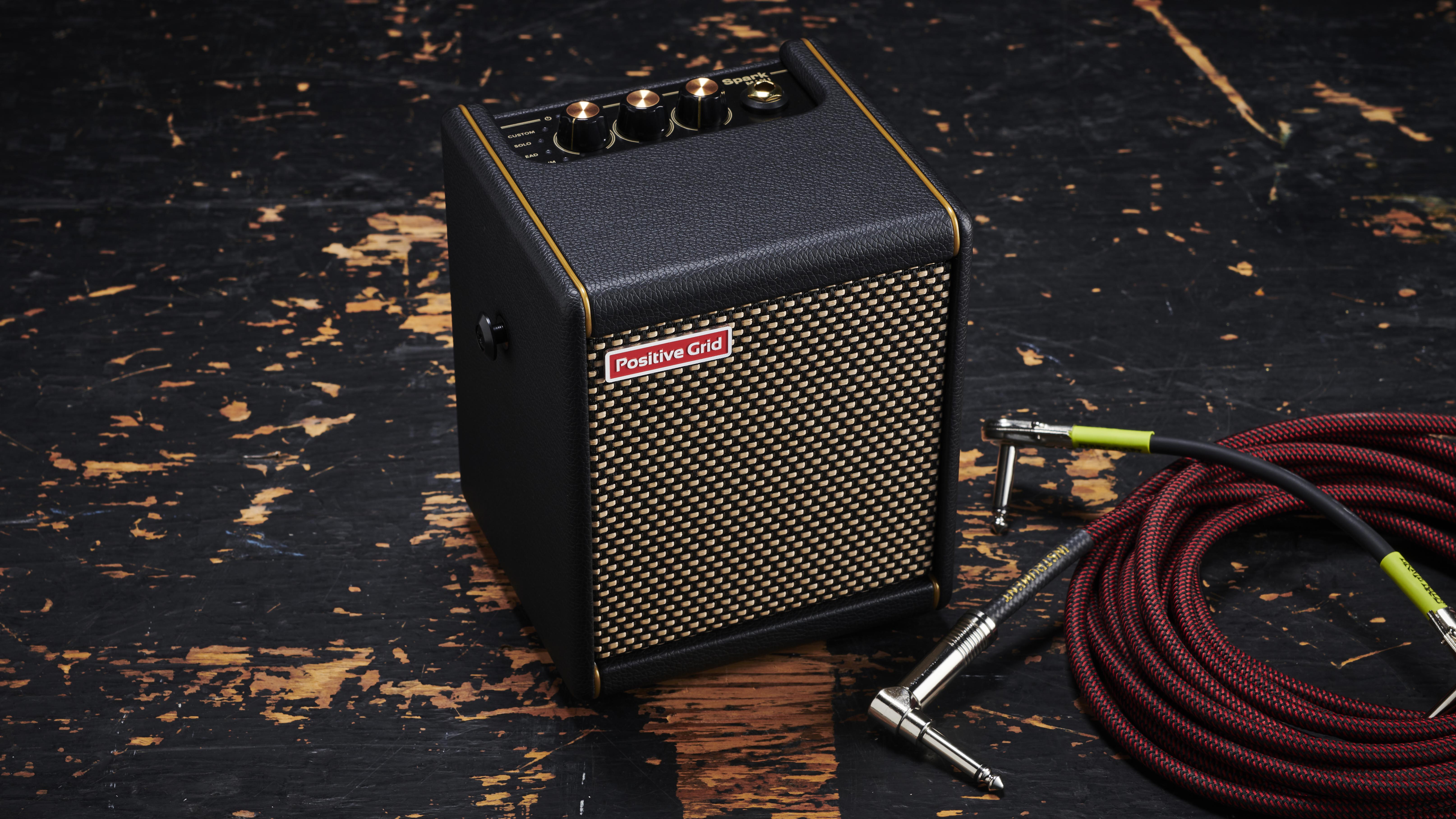MusicRadar Verdict
We think you get what you pay for here; it's a fantastic sounding mini modelling amp with an app experience that widens the scope for players of all levels to improve their playing and explore sounds.
Pros
- +
Great range of tones and sound .
- +
The amp and app experience is superb.
- +
Good battery life.
Cons
- -
We encountered low level digital interference when using the amp as a USB interface for recording but we're told a fix is coming.
MusicRadar's got your back
Positive Grid Spark Mini amp : What is it?
Guitarists are understandably focussed on what we play and the gear we use to play it, but where we play is just as important. With hectic lives at work, school and college, finding the time and space to stay inspired and enjoy guitar matters. And the reality is most of us need to play at home so we need a guitar amp that can excel in that environment.
TYPE: Digital modelling combo
OUTPUT: 10 watts
SPEAKERS: 2x2” active stereo with passive radiator
ONBOARD EFFECTS: 33 Amp Models, 48 Effects
SOCKETS: 1/4” guitar input, 1/8” aux input, 1/8” headphone out, Bluetooth audio, USB-C
DIMENSIONS: 135mm [w] x 162mm [height including feet] 125mm [d]
WEIGHT: 1.361 kg
That raises dilemmas of volume, power and space. You might have a designated practice space at home, but you may need to stay mobile with it to avoid disturbing / annoying the people you live with. You might want to take your amp outside or away on holiday with you. The guitar amp market knows this, and so does Positive Grid. That's why it's designed this Mini rechargeable version of its massively popular Positive Grid Spark smart modelling amp.
As you can see from the pic above, The Spark Mini is less that a third of the size of the Spark 40. And that also means it loses a lot of onboard controls; the three-band EQ, Delay, Reverb, Modulation, Gain and seven-mode selector; all gone. This leaves four preset buttons, Guitar and Music level controls and, around the back, a Bluetooth Pair button that can also be held down to activate the onboard guitar tuner.
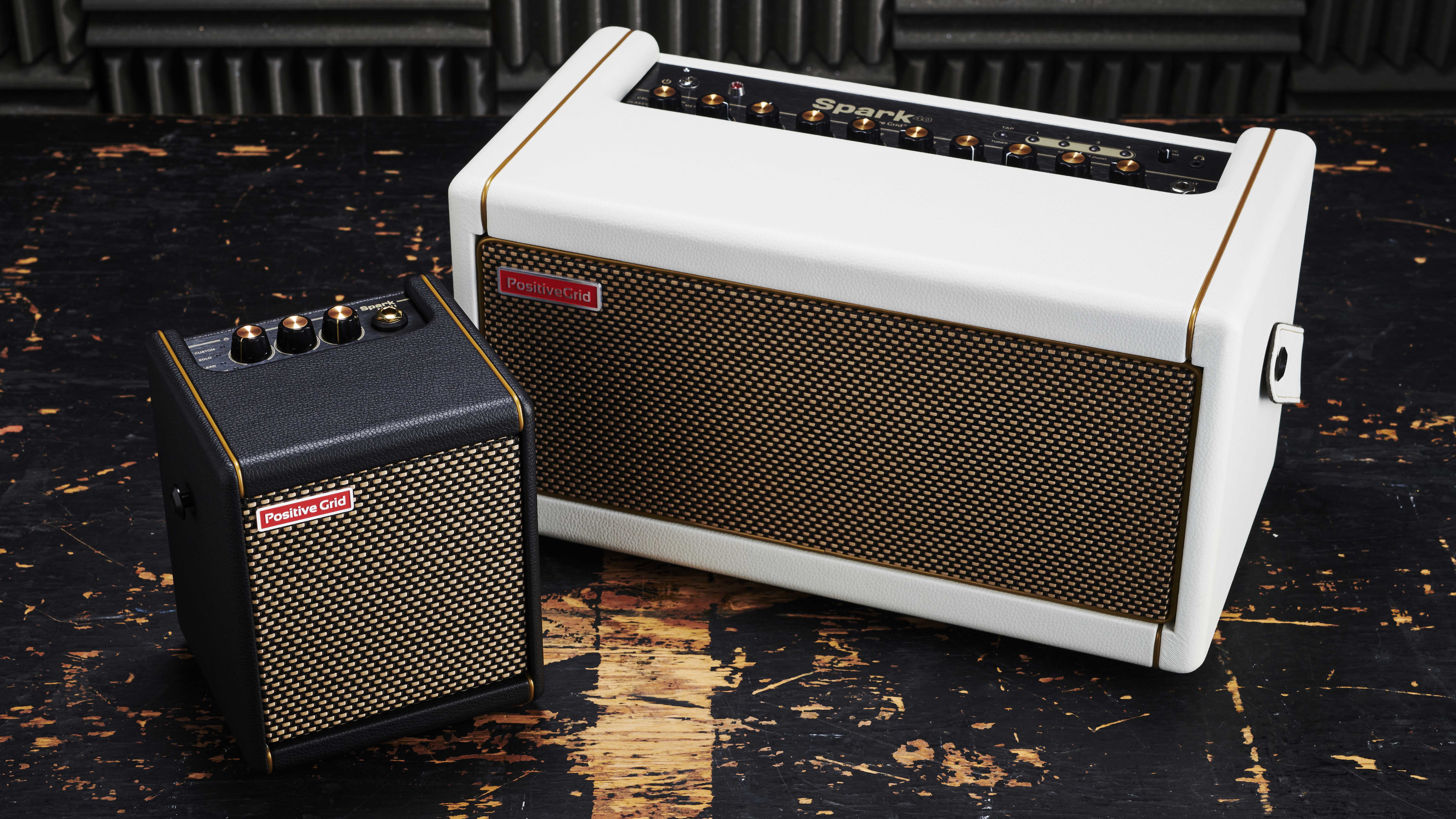
It's a necessary step to scale the Spark to Mini proportions, but a lot of those controls are still there – they're just accessed exclusively through the Spark app for your smartphone or tablet. This is a vital component of the Spark experience; it's where you can audition and tweak tones via the onboards models, play along with PG's Smart Jam feature, use the app to transpose chords, learn songs from streaming platforms and even film and upload your playing.
The amp connects with the app via Bluetooth and the hardware itself runs from a rechargeable battery said to offer up to eight hours of power.
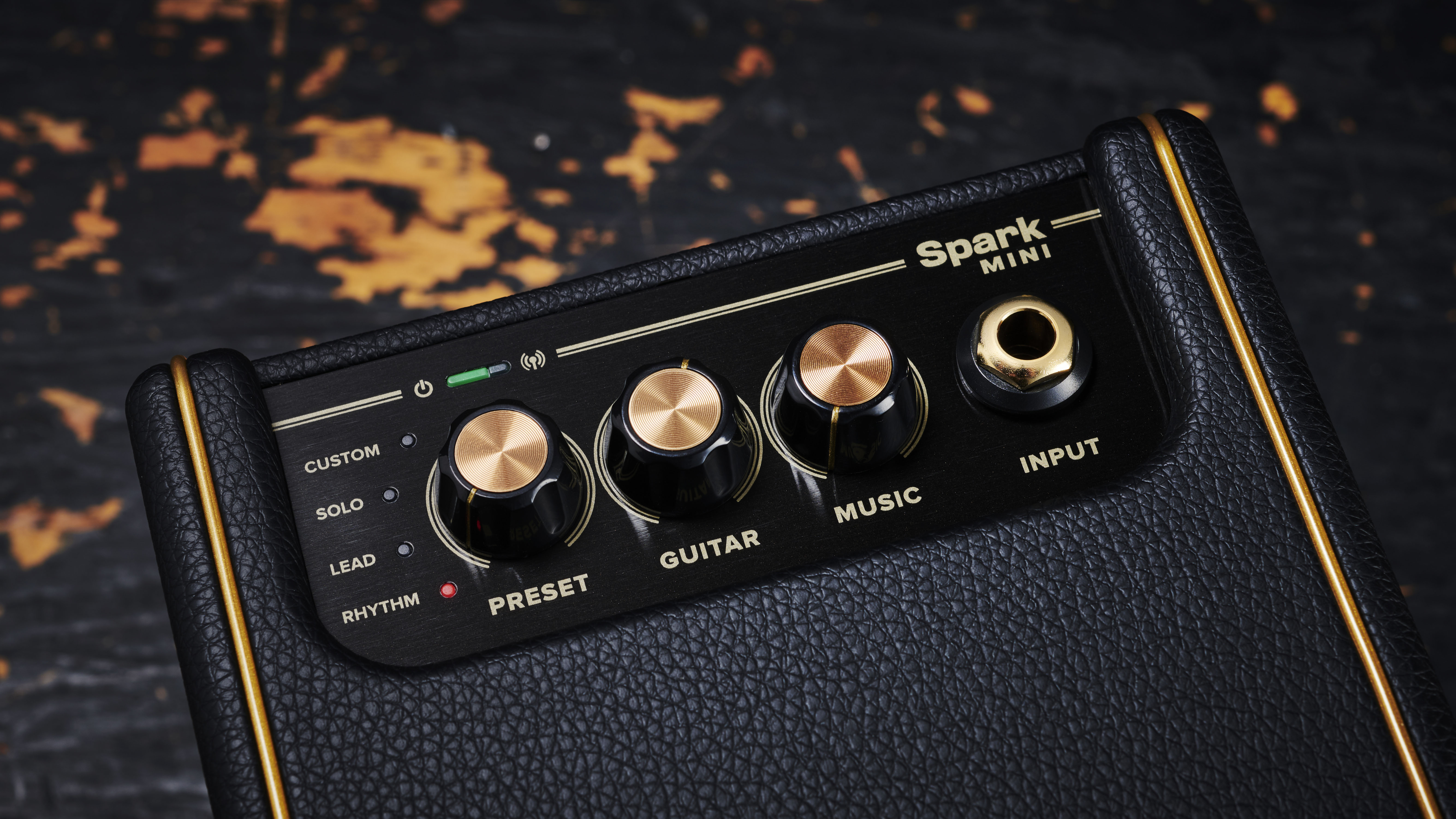
The look and build of the Spark Mini continues the gold piping and black Tolex (or Pearl white) style of its bigger sibling. It's attractive and distinct, while being classy. PG are even introducing custom colour grilles to add your own personal touch to the Mini.
It would be a worthy addition to any work or studio desk – especially as it takes up less real estate than the bigger model. Like the Spark 40, there's also a detachable carrying handle that you're sure to use if you're looking for a quick exit for some guitar sanctuary. And weighing only 3lbs, including the internal 3000maH battery, it's an easy load to bear.
Want all the hottest music and gear news, reviews, deals, features and more, direct to your inbox? Sign up here.
A look underneath the Spark Mini reveals four soft rubber feet but also a surprise; what looks like an additional speaker.
It's a passive radiator for bass frequencies; efficiently powered via the active speakers. And even those rubber feet are part of the design it seems; what PG calls 'custom damping' with curved bottoms that provide three points of contact each for 'just the right amount of focussed bass reproduction'. We'll see, or rather hear, how that holds up to scrutiny.
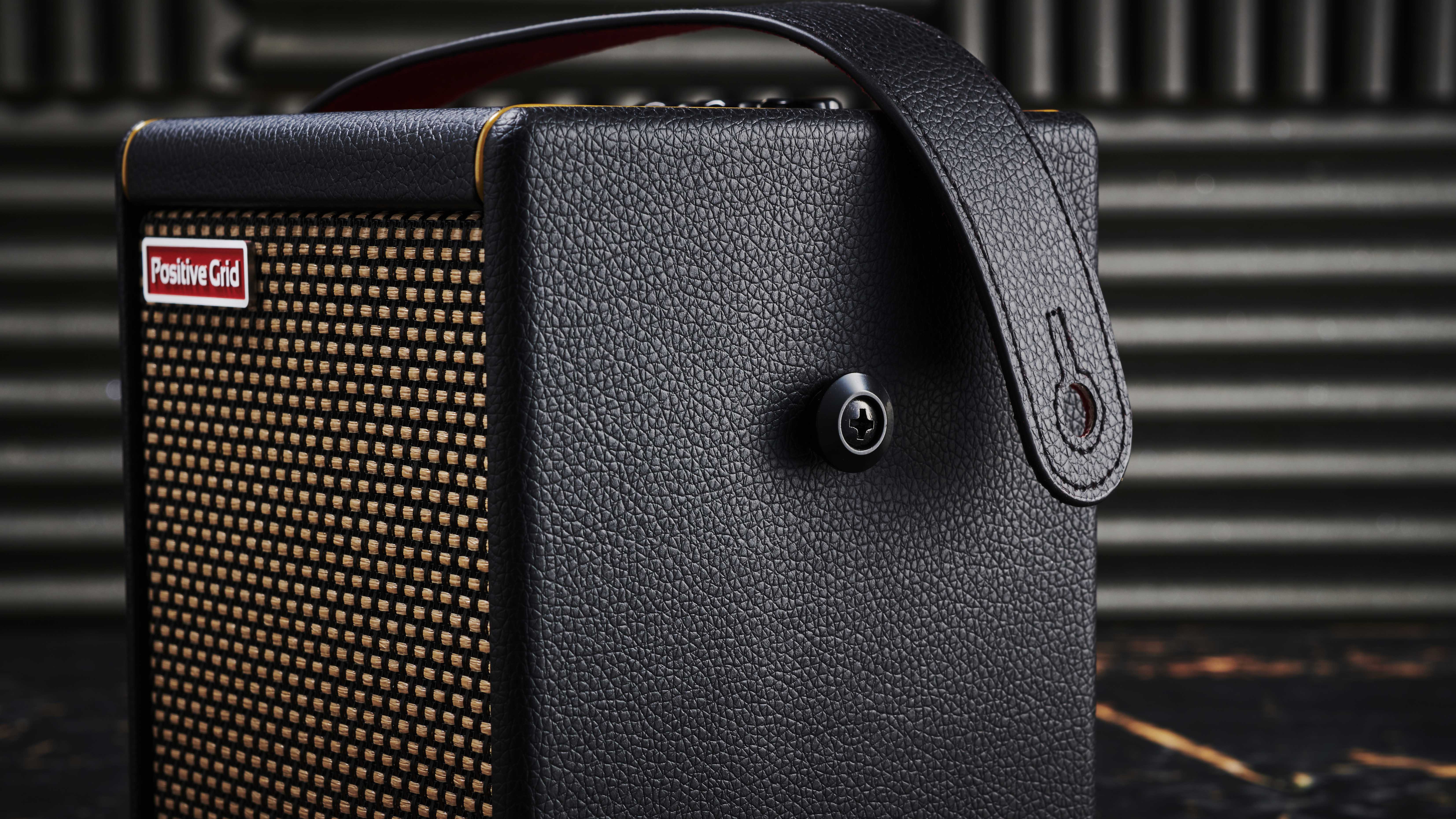
The 10-watt Class D Spark Mini is full stereo; a pair of 2-inch full-range speakers angled at 8 degrees (five watts per speaker). On paper this sounds like a small package with sonic depth. And though when you buy the Spark Mini you're investing in the combined experience with the Spark app, it also needs to stand up as a mini practice amp and Bluetooth speaker in its own right.
Positive Grid Spark Mini amp: Performance and verdict
It sounds fuller than any amp this size has any right to
Positive Grid uses the four onboard presets to showcase models with increased gain as you go through. It's a good introduction before you start going into the app and tweaking. But before all that we turn to that volume control… wow. At 50% the Spark Mini hits the kind of output we'd expect from its size. So yes, it can go twice as loud as some of you might expect. And it sounds fuller than any amp this size has any right to. No boxiness here, with the digital delay and reverb models helping to give the impression the physical source is significantly larger.
The old rock n' roll saying is that if it's too loud… you're too old. Well some have the luxury to say that, but we find in our house it means you have to turn down if you want to keep on good terms with your family. But we also found that with volume at 40% we were happy with the output here sitting close by, and a major plus is the Spark Mini still sounds good even lower. And that's good news for battery life too as louder means higher drain – keeping it under 50% we found the battery claims as realistic for straight playthrough with guitar. Through headphones the expansive stereo sound also makes for a great silent practice option for taking this amp away with you too.
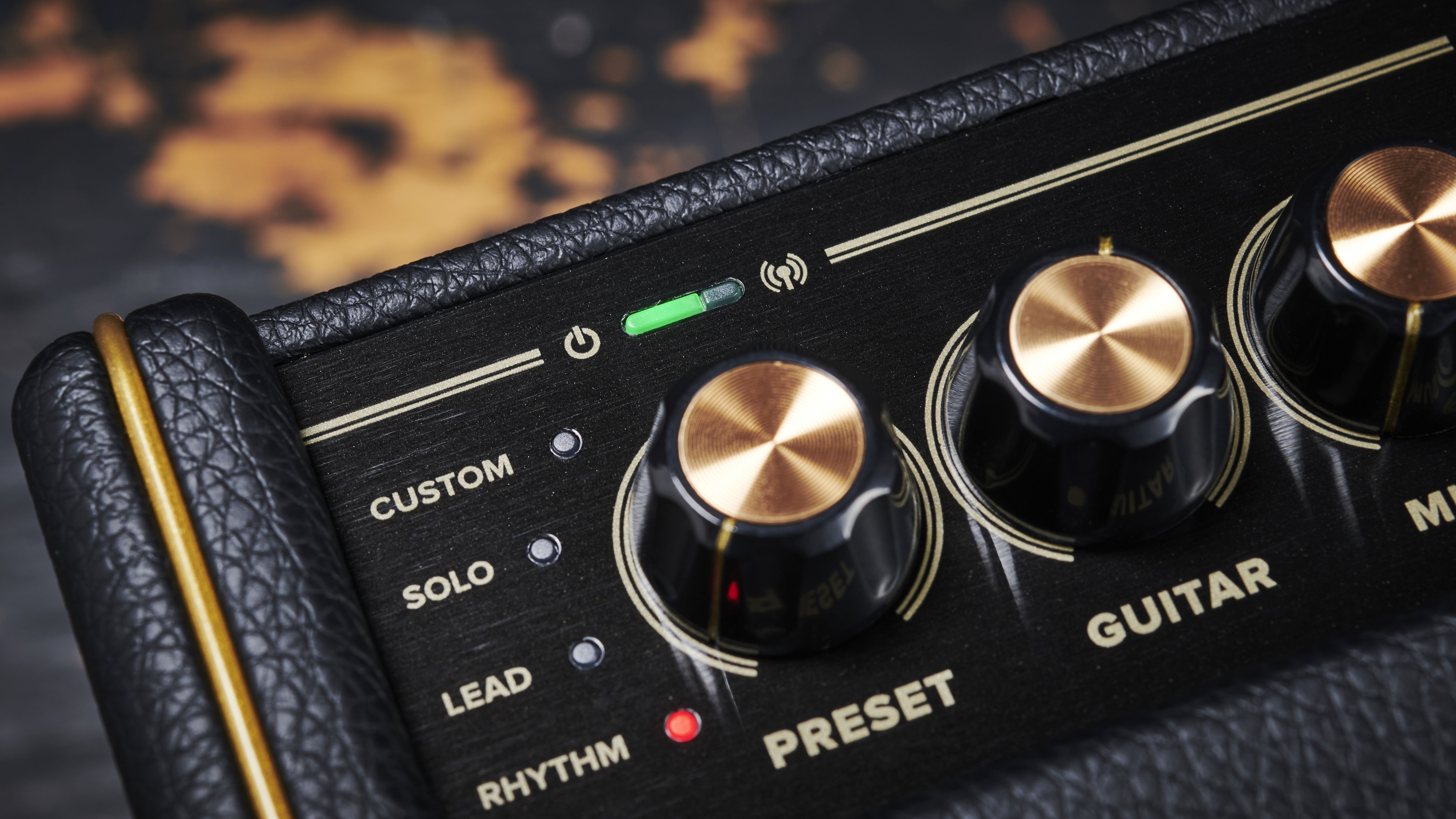
Used with just guitar and without the app, there's a really satisfying simplicity to the experience of using the Spark Mini, and a lot of that is because of the way it sounds
While the actual speaker experience here is superb and the music streaming experience showcased the impressive, broad bass response when we tried it with music from including Karnivool, Massive Attack, Meshuggah and The Weeknd, it doesn't count for much without tones.
We don't want to sound like PG hypemen here but the company has undeniable form in the field; and the Spark amps deliver on the extensive work the company has done in modelling effects and amps with its BIAS tone engine. This amp reaps the benefits by channeling an extensive array of tones into a mini form factor.
With no gain control or EQ on the hardware, you need to both plan your presets carefully but also make use of your guitar's powerful onboard sound shaping; otherwise known as the volume and tone controls. And the BIAS amp models really respond well to this. We actually enjoyed the simplicity of just having excellent amp tones at the touch of a button, then taking a deeper dive on shaping and adding effects with the app as required. Used with just guitar and without the app, there's a really satisfying simplicity to the experience of using the Spark Mini, and a lot of that is because of the way it sounds.
The 'Lead' factory preset is a great go-to for crunch that you can dial back from to start. Using the AC Boost amp model with a Clone Drive along with some Echotape and Room Studio reverb is an excellent showcase, and you can audition the various effects to your tastes and save it to the preset with ease via the app. Six delays including Multi Head, Vintage Bucket Brigade-style; nine reverb types , 14 drives, 14 modulation and EQ pedals (including six-band EQ just for bass), five compressions and a noisegate all offer distinct and detailed models. And buying the optional Jimi Hendrix pack adds even more.

The problem of option paralysis with modelling tones is real for some players; and sometimes you spend too long searching for tones and not playing enough. If you don't feel like experimenting with the effects and the 39 guitar, bass and acoustic amp models (including Hendrix pack ones), you can simply peruse the vast ToneCloud library that users are constantly adding to. These are ready-made preset signal chain that you can try out at the touch of a button, add to your favourites and organise by genre and download to one of your amps preset slots if you wish. It works very well indeed - allowing you to try the presets with ease, search by song or artist to see how close users can get you (some of the attempts at the same song tones can be wildy different) and even view the tones by popularity.
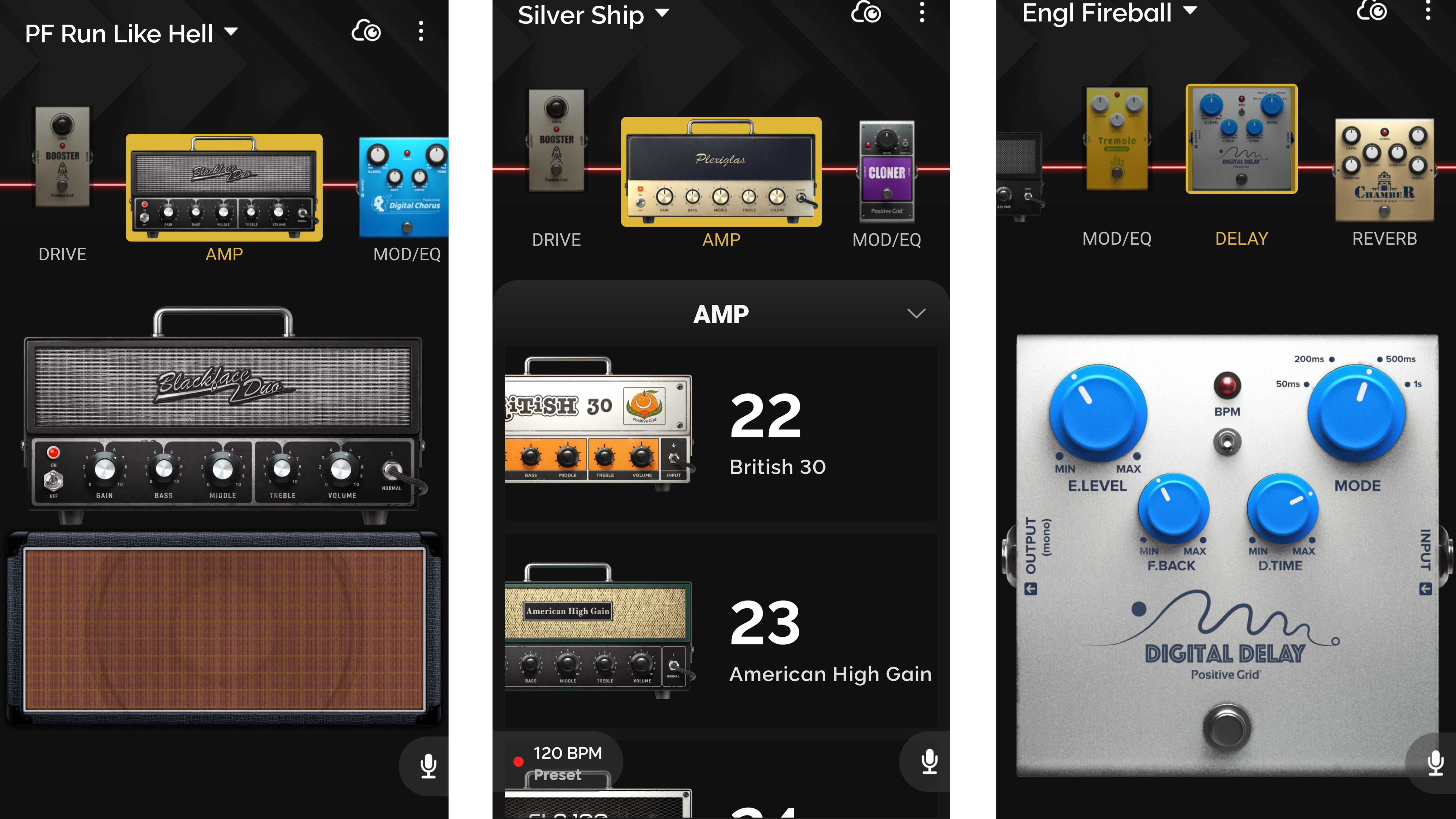
It's inspiring stuff, and can encourage you out of your tonal comfort zones
We tried a compressed 'Fender' clean tone, an Engl Fireball-style high-gain presets and a Gilmour Run Like Hell delay tone to start, and had great fun exploring further. The scope of sounds here with the response and feel of the amp models they're founded on is simply unrivalled for a mini amp. The optional noise-gate is especially efficient on the high gain models too. If you have already used the Spark 40, you'll know this, but hearing the detail and huge tones coming from this little amp make it feel new again. It's inspiring stuff, and can encourage you out of your tonal comfort zones. It's as simple or deep as you want it to be thanks to PG's intuitive design.
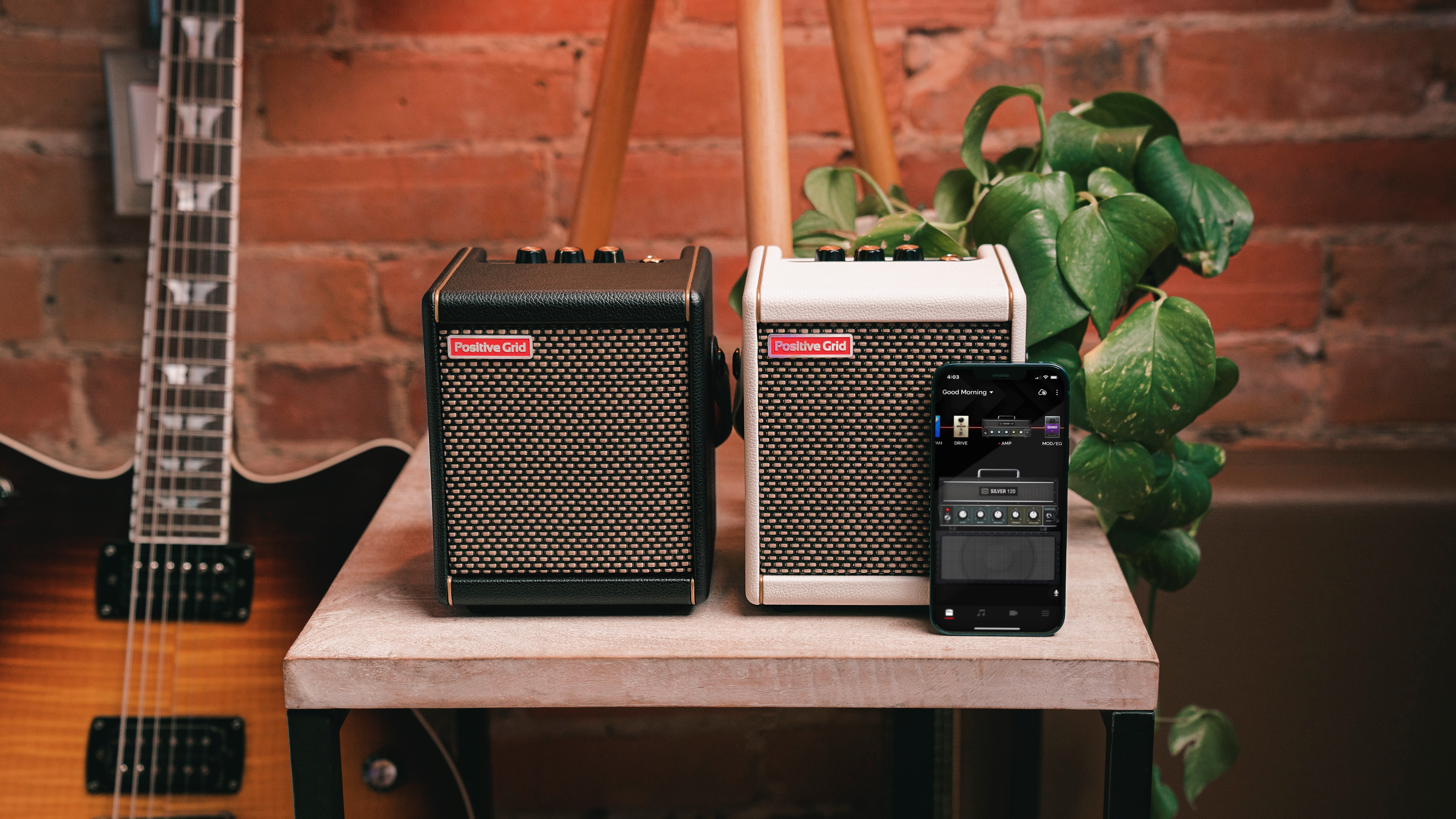
Part of the appeal beyond the hardware is you can then take your favourite tones and stay in the Spark app to work on your playing further with the tools Positive Grid provides; you can even tune your guitar now with the app.
Smart Jam allows you to play eight bars for bass and drum backing tracks to be created for you; or you can jump into a ready-made one. The app also curates third party backing tracks from YouTube to stream.
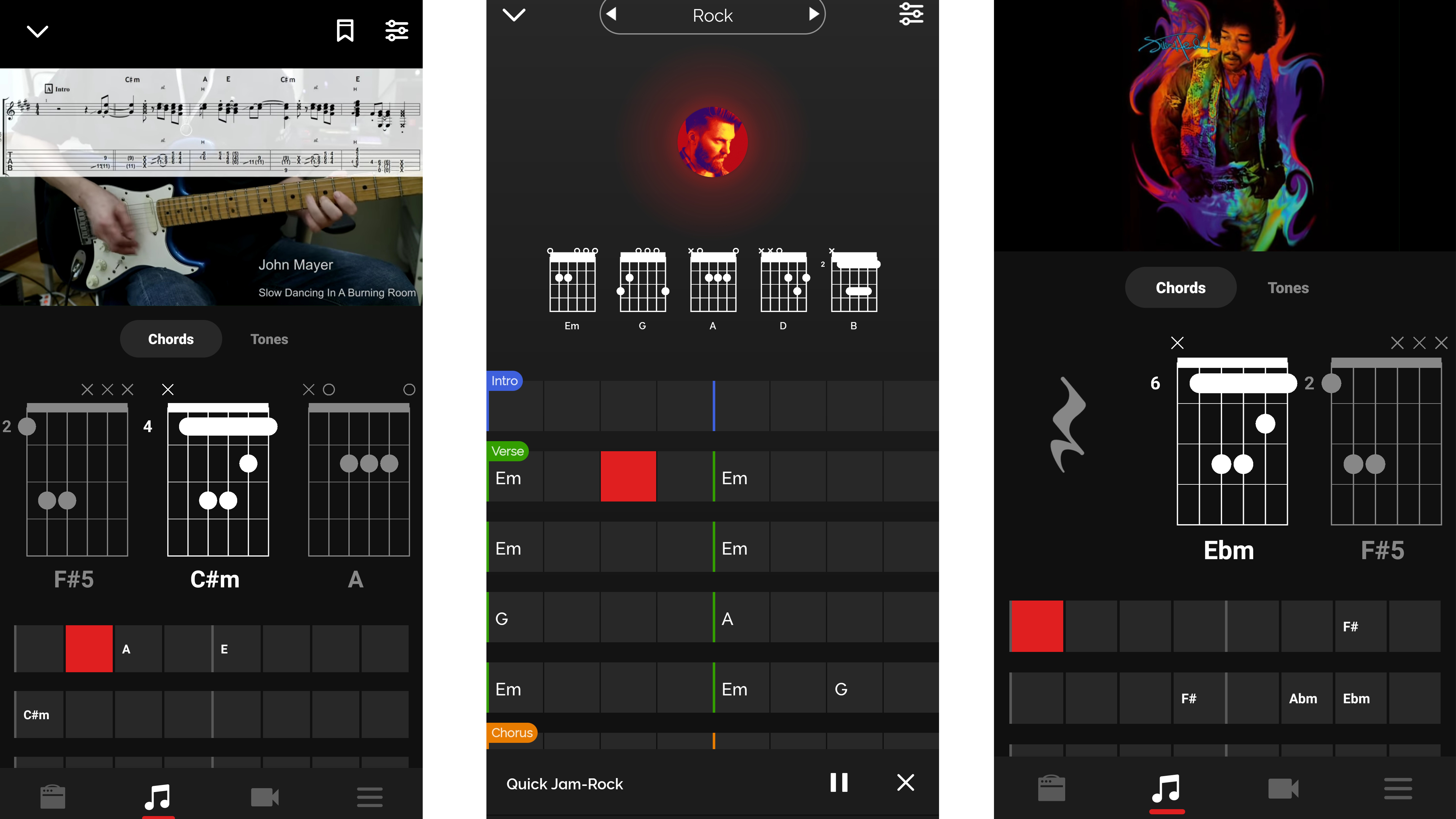
Where the Spark Mini starts to come into its own for us is when streaming music and guitar tones simultaneously through the speaker – and being able to take that experience with you wherever you go for playing or just listening
We also had the luxury of comparison after loading the factory Preset 2 and 3 tones on the Spark Mini on to its bigger brother. The Mini is decidedly brighter in factory settings with the punchiness we'd expect from the smaller speakers. Though the Spark 40's additional virtual EQ pedal in the modulation slot via its latest firmware can address this to a significant degree and lower bass dominance that you may hear in certain presets, your choice between the two could also be matter of taste as well as headroom.
Where the Spark Mini starts to come into its own for us is when streaming music and guitar tones simultaneously through the speaker – and being able to take that experience with you wherever you go for playing or just listening. It's remarkably powerful as a jamming tool with the two level controls making it easy to dial things in fast, with Bluetooth connection with our smartphone proving consistently reliable. Stereo separation with speakers facing forward on a unit this compact is unsurprisingly a compromise, but the low end response from that radiator speaker underneath pays off when it's handling the two sources with confidence.
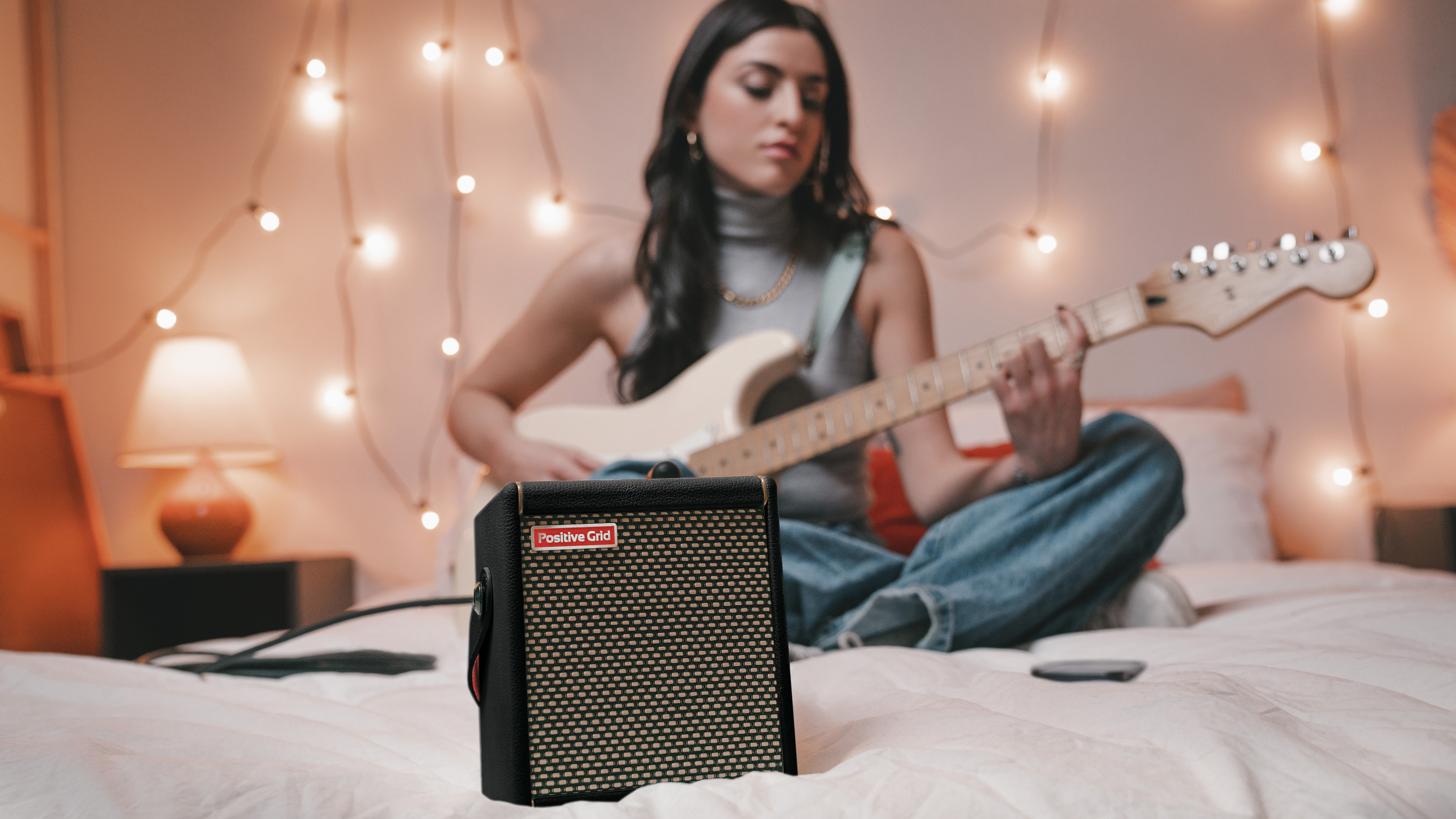
Even with the frequent special prices Positive Grid offers its Spark amps at, this is a higher price than most mini amps out there ($229/£174). But in return you get an enhanced experience with tones that stand up even if you choose not to use the app. For the price of a quality overdrive pedal you are getting an inspiring piece of gear that could fill a hole in your playing life at home. And if you're learning to play covers regularly – meet your new best friend!
We really did enjoy the Spark Mini's well-balanced tonal character, and found ourselves playing a lot more around the house when it was around. But the added scope for recording with its tones as a USB audio interface (you'll need to disable your Bluetooth device for this) makes a case for its home base becoming your desk. However, we did pick up some low level static noise in a recording situation, despite running both amp and MacBook on batteries and trying a number of guitars and cables. We then reported our findings to the team at Positive Grid who have told us a fix is in the works in time for launch and advised us to increase the buffer size in our DAW in the meantime.
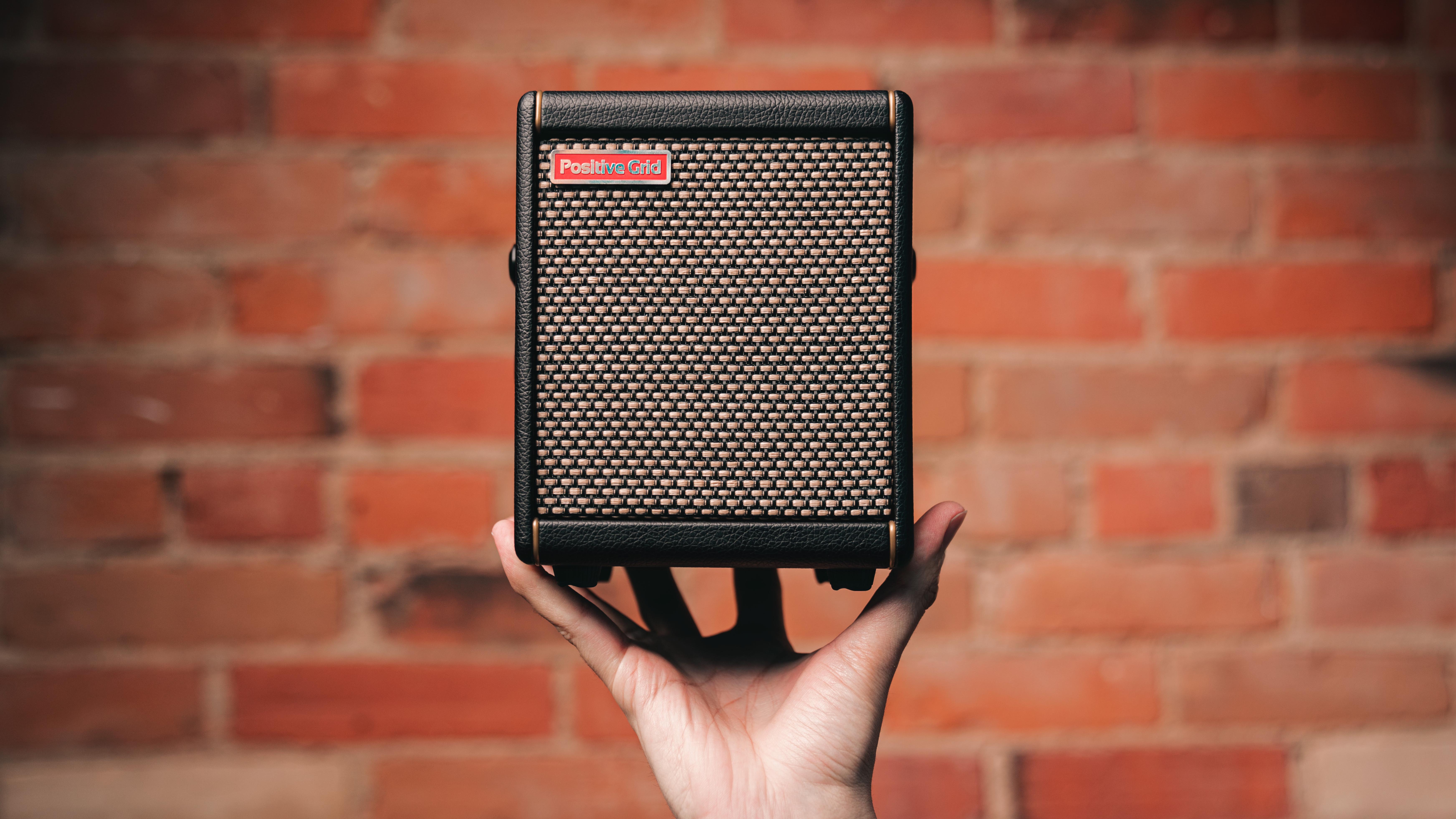
Whether you opt for this or the Spark 40 really depends on your needs and the way you see yourself using a practice amp at home and travelling. Both offer the same great selection of tones and app functionality for guitar, bass and electro-acoustic players. The larger Spark isn't relatively that much more in cost, but offers increased headroom for physically jamming with other musicians and far more onboard tone control.
The Spark Mini's mobility because of its size and battery power is a strong suite for us, bringing flexibility to take your amp (and collection of digital tones) anywhere, with output that transcends the compact dimensions. This amp does a lot with its small footprint.
MusicRadar verdict: We think you get what you pay for here; it's a fantastic sounding mini modelling amp with an app experience that widens the scope for players of all levels to improve their playing and explore sounds.
Positive Grid Spark Mini amp: The web says
"Positive Grid’s Spark Mini doesn’t have any business sounding as good as it does for a practice amp, add in the company’s smart connected sound design, jam-along integration, audio interfacing, and Bluetooth streaming, and you’re looking at one of the best, most feature-rich options in its weight class."
9to5toys
"Issues or no, the Spark Mini is already a great practice amp and Bluetooth speaker. Hopefully a firmware fix will make it a great recording amp as well."
TechHive
Positive Grid Spark Mini: Hands-on demos
Darrell Braun Guitar
Positive Grid
for3v3rfaithful
Steve From Boston
Papalytic
Positive Grid Spark Mini amp: Specifications
- TYPE: Digital modelling combo with internal rechargeable battery for guitar, bass and acoustic with BIAS Tone Engine and app integration
- OUTPUT: 10 watts
- SPEAKERS: 2x2” active stereo with passive radiator
- TOP CONTROLS: Guitar level, Music level, Preset selection
- ONBOARD EFFECTS: 33 Amp Models (additional available to purchase via Jimi Hendrix add-on), 48 Effects
- SOCKETS: 1/4” guitar input, 1/8” aux input, 1/8” headphone out, Bluetooth audio, USB-C connectivity for recording
- DIMENSIONS: 135mm [w] x 162mm [height including feet] 125mm [d]
- WEIGHT: 1.361 kg
- CONTACT: Positive Grid
MusicRadar is the number one website for music-makers of all kinds, be they guitarists, drummers, keyboard players, DJs or producers...
- GEAR: We help musicians find the best gear with top-ranking gear round-ups and high-quality, authoritative reviews by a wide team of highly experienced experts.
- TIPS: We also provide tuition, from bite-sized tips to advanced work-outs and guidance from recognised musicians and stars.
- STARS: We talk to musicians and stars about their creative processes, and the nuts and bolts of their gear and technique. We give fans an insight into the craft of music-making that no other music website can.
